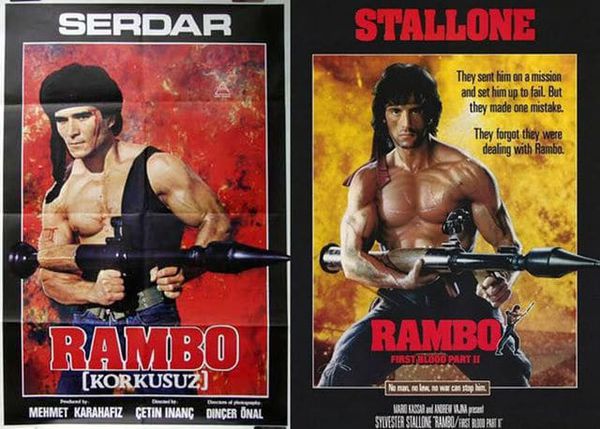Eye For Film >> Movies >> Remake, Remix, Rip-Off (2014) Film Review
Remake, Remix, Rip-Off
Reviewed by: Keith Hennessey Brown

This German documentary on Turkish popular cinema impresses in many ways, from the number of behind and before the camera personnel interviewed and allowed to speak for themselves by the self-effacing filmmakers in this age of the celebrity documentarian; the insightful remarks of well-selected academics, critics and fans; the wider context given and, above all, the number of films cited and expertly edited together.
The narrative begins with a number of luminaries from the Turkish popular cinema of the 1960s through to the 1980s commenting upon the finite number of plots that exist. They disagree on the exact number but together set up the titular three-R’s approach as inevitable and universal. There’s nothing new under the sun, indeed, though together those three R’s lead to others - recombination, reinterpretation, reinvigoration, reflexivity - when considered through an industry making 300 films a year on extremely tight schedules and low budgets.

What does it mean to watch a Turkish version of The Exorcist, Seytan, for instance, when the religious context is that of Islam rather than Christianity? Or Dracula in Istanbul, when there is the historical context of the Ottoman Empire and the Romanian Vlad Dracul? Or a superhero romp in which Spider-man, albeit in a green and purple costume, is a sadistic killer? Clearly in each case it’s going to be a very different experience from what the viewer is used to.
This said, there are plenty of reference points outside the hegemonic frameworks of Hollywood popular cinema and European/World art cinemas, with Bollywood, Italy, and Hong Kong being three that immediately come to mind.
The elements that suggest themselves, in varying quantities, from these reference points include the importance of the family film, of melodrama, and of pleasing the audience and the unimportance of elite critics and copyright.
The discussions of the material realities of film-making in Turkey even into the 1970s are fascinating. Filmmakers did not have daily rushes and would instead only see what had been filmed after shooting had concluded. Film stock was in short supply, often only allowing for a one shot/take approach. If a filmmaker was supplied with 30 reels for each of five films, he might well opt to use 25 reels to enable him to make six films. If stock was bought on the black market, it was liable to have different chemical characteristics, making colour matching an unpredictable business. Cinematographers rarely had filters to compensate for these vagaries and might improvise by using coloured gels derived from sweets - which would then tend to melt under the heat from the lights.
In sum, improvisation was the name of the game with the real triumph that of actually being able to get films made full stop. Or, rather, not just to get films made, but also made without regular fatalities when untrained stars were generally performing their own stunts.
Though both a great introduction to Turkish popular cinema and a valuable guide for future viewing for those who’ve already seen some of the better known examples, such as Turkish Star Wars/Rambo/Star Trek/Wizard of Oz, there were a few niggles.
The dates given occasionally seemed off. For example there are clips from what is identified as a version of Dillinger, credited as 1971. The clips are also used an illustration of another important aspect of the Turkish approach, namely the re-use of existing scores, in this case that for The Godfather. However the Godfather wasn’t released until 1972 and John Milius’s Dillinger until 1973.
The discussion of how the political situation impacted Turkish filmmakers was a bit confusing. Though this could well be a consequence of the 1960s through early 1980s seeing a series of military coups and re-esablishments of civilian government, beginning this part of the narrative with the 1980 coup probably didn’t help.
Still, any film that can supply you with the frisson of Enter The Dragon’s John Saxon being mistaken for Kriminal’s Glenn Saxson, only for the interviewee to correct himself and the filmmakers happily including this, cannot but be considered a must see, if you know what I mean...
Reviewed on: 03 Jul 2015














